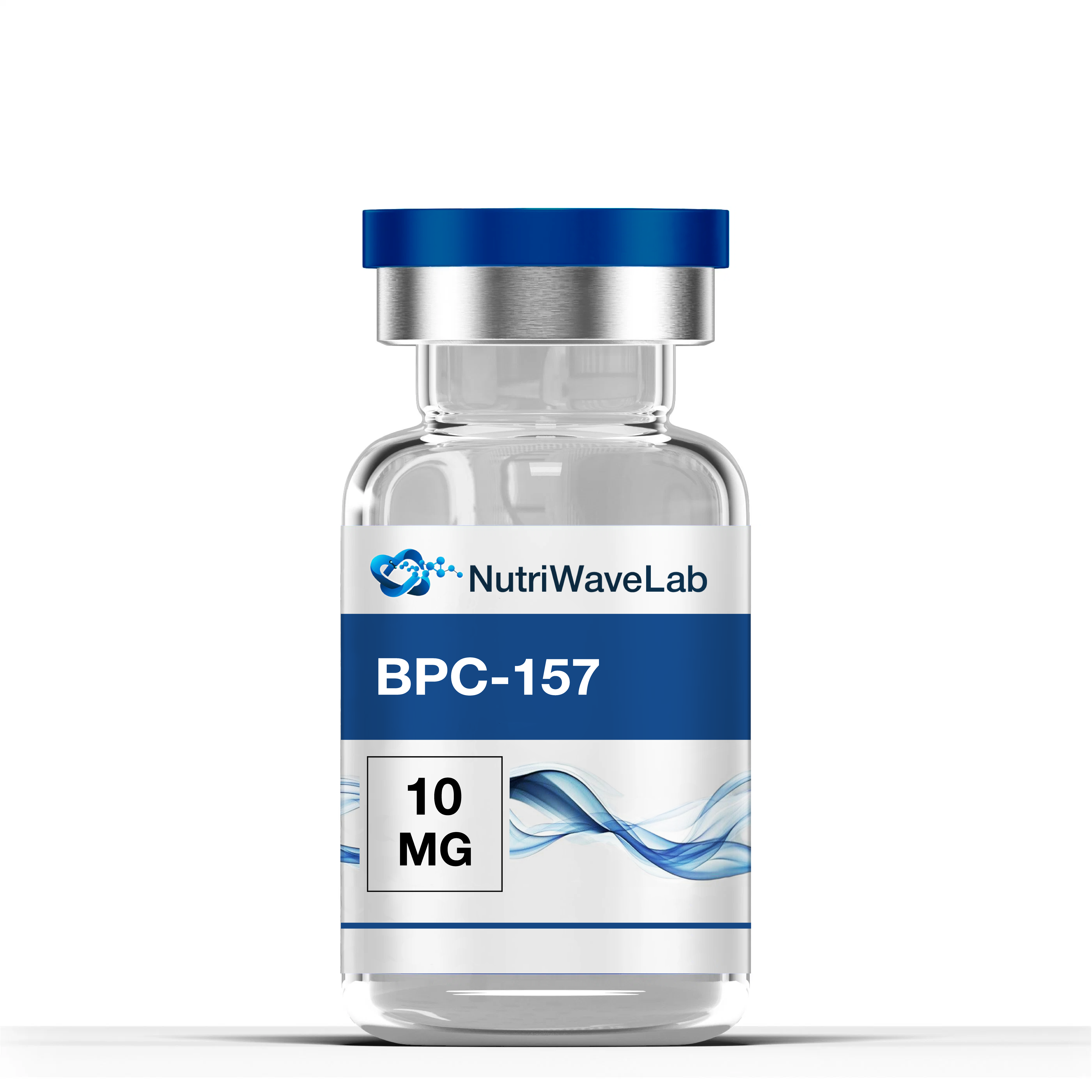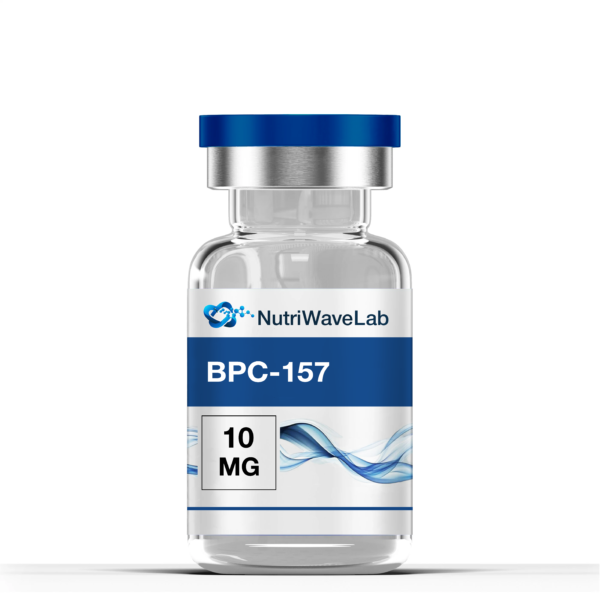BPC-157 10mg
$0.00
- when buying 5 units of goods 5% discount
- when buying 10 units of goods 8% discount
14 in stock
BPC-157 — Research Peptide for Regeneration and Cellular Protection
Chemical and Biochemical Characteristics
-
Peptide Name: Body Protection Compound-157
-
Amino Acid Sequence: Gly-Glu-Pro-Pro-Pro-Gly-Lys-Pro-Ala-Asp-Asp-Ala-Gly-Leu-Val
-
Molecular Formula: C₆₂H₉₈N₁₆O₂₂
-
Molecular Weight: 1419.56 g/mol
-
PubChem CID: 108101
-
Peptide Class: Cytoprotective / Angiogenic peptide fragment
-
Structure Type: Synthetic 15-amino-acid pentadecapeptide derived from human gastric protein BPC
Overview
BPC-157 (Body Protection Compound-157) is a synthetic peptide fragment originally isolated from a naturally occurring protective protein found in the human gastric mucosa.
It has become a major focus of biomedical research due to its potential roles in wound healing, angiogenesis, and anti-inflammatory signaling.
Laboratory studies suggest that BPC-157 may support the regeneration of muscles, tendons, nerves, and blood vessels, while helping to maintain gastrointestinal integrity under stress conditions.
Its unique combination of angiogenic, antioxidant, and cytoprotective actions makes it a versatile model compound in regenerative and vascular biology.
Mechanism of Action
BPC-157 appears to exert its biological effects through angiogenic and nitric-oxide-dependent pathways:
-
VEGFR2 activation promotes endothelial cell proliferation and migration;
-
Nitric oxide modulation enhances blood vessel dilation and tissue oxygenation;
-
Fibroblast recruitment increases collagen deposition and extracellular matrix remodeling;
-
Regulation of FAK and paxillin phosphorylation facilitates actin polymerization and cellular migration;
-
Reduction of oxidative stress markers such as MDA and reactive oxygen species improves cellular resilience.
Collectively, these processes help explain BPC-157’s broad research profile in tissue protection and vascular recovery.
Tissue Regeneration and Wound Healing
In preclinical studies, BPC-157 has been shown to accelerate fibroblast proliferation, angiogenesis, and re-epithelialization, leading to faster wound closure.
It also supports “vascular running”, a process in which new blood vessels form to bypass obstructed or damaged areas, thereby restoring perfusion.
These findings position BPC-157 as an important experimental peptide for studying ischemic injury recovery, ulcer repair, and post-traumatic tissue remodeling【1】【2】【3】.
Tendon, Ligament, and Muscle Repair
Tendon and ligament injuries typically heal poorly due to limited blood flow.
Animal studies demonstrate that BPC-157 enhances collateral vessel formation, fibroblast density, and matrix regeneration in tendon and ligament models【4】【5】.
This activity may be associated with up-regulation of VEGF, FAK, and actin filament formation (F-actin), supporting improved cellular mobility and structural repair.
Researchers have compared BPC-157 favorably to growth factors like bFGF and EGF, noting its superior tissue penetration and lower pro-inflammatory signaling.
Gastrointestinal and Organ Protection
BPC-157’s natural origin in gastric mucosa underlies its strong cytoprotective effect in the digestive tract.
In rodent studies, it has been shown to reduce ulceration, NSAID-induced gastric bleeding, and intestinal inflammation【6】【7】.
It also demonstrated protective effects on the liver, heart, and central nervous system, likely through NO-mediated microcirculation enhancement.
Antioxidant and Anti-Inflammatory Properties
BPC-157 has demonstrated the ability to reduce oxidative stress by modulating nitric-oxide synthesis and scavenging reactive oxygen species (ROS)【8】.
This antioxidant action has been observed in studies involving gastrointestinal tissue, vascular endothelium, and neural cells.
Such data suggest potential utility in exploring cellular redox balance and inflammation-driven degenerative conditions.
Drug-Induced Toxicity Research
A particularly notable finding is BPC-157’s potential to mitigate the side effects of pharmacological agents:
-
Protecting against NSAID-induced gastric damage;
-
Preventing QT prolongation and cardiac arrhythmias caused by certain psychotropic or metabolic drugs【9】;
-
Reducing neurotoxic effects and cataleptic symptoms in models of psychiatric drug exposure【10】.
This makes BPC-157 a valuable candidate for studying protective co-treatments and pharmacological resilience mechanisms.
Other Research Areas
Beyond classical regeneration, BPC-157 has been examined in unexpected models:
-
Bee colony health: supplementation improved survival in hives infected with Nosema ceranae, suggesting gut-protective effects even across species【11】;
-
Vascular ischemia models: enhanced angiogenesis and reperfusion following arterial blockage;
-
Neurological research: preliminary data suggest modulation of serotonin and dopamine systems.
Future Research Directions
Ongoing investigations continue to explore BPC-157’s molecular pathways, including:
-
VEGFR2/NO axis in angiogenesis;
-
Fibroblast migration and ECM dynamics;
-
Cross-organ protection (GI, cardiac, hepatic, neural).
Although results are promising, BPC-157 remains a research-only compound and is not approved for medical use.
All findings are preclinical and intended for educational and laboratory investigation by qualified professionals.
Summary
BPC-157 is a synthetic gastric-derived peptide that has shown multi-system cytoprotective and regenerative properties in laboratory settings.
By promoting angiogenesis, reducing oxidative damage, and modulating fibroblast activity, it continues to serve as an important tool for studying healing mechanisms and tissue resilience.
Selected References
-
Sikiric P. et al. BPC-157 accelerates healing and angiogenesis in tendon and ligament injury models. J Orthop Res, 2018; 36(2): 601–609. PubMed
-
Chang C.H. et al. Effects of pentadecapeptide BPC-157 on blood vessel growth and endothelial cell function. Growth Factors, 2017; 35(5–6): 247–256. PubMed
-
Vukojevic J. et al. NO-modulation and angiogenesis as mechanisms of BPC-157 tissue repair. Curr Neuropharmacol, 2020; 18(9): 833–844. PubMed
-
Pegg C.C. et al. BPC-157 enhances fibroblast migration via FAK/paxillin signaling. Cell Biochem Biophys, 2016; 74(3): 365–372. PubMed
-
Sikiric P. et al. BPC-157 improves healing of transected Achilles tendon in rats. J Appl Physiol, 2010; 109(3): 903–910. PubMed
-
Kang E.A. et al. Protective effects of BPC-157 on NSAID-induced gastric injury. World J Gastroenterol, 2019; 25(23): 2795–2807. PubMed
-
Sikiric P. et al. BPC-157 counteracts neurotoxic and cardiotoxic side effects of psychotropic drugs. Regul Pept, 2012; 177(S1): S85–S92. PubMed
-
Liu Y. et al. Antioxidant and NO-mediated protective actions of BPC-157 in ischemic models. Free Radic Biol Med, 2020; 160: 68–76. PubMed
-
Knezevic M. et al. BPC-157 and cardiac electrophysiological protection. Acta Physiol Croat, 2019; 73(4): 491–499. PubMed
-
Tkalcevic V.I. et al. Neuroprotective profile of BPC-157 in psychotropic drug models. Pharmacol Biochem Behav, 2018; 172: 77–85. PubMed
-
Simic V. et al. BPC-157 improves survival in bee colonies infected with Nosema ceranae. Front Physiol, 2022; 13: 873642. PubMed
Product Use: THIS PRODUCT IS STRICTLY FOR SCIENTIFIC RESEARCH PURPOSES ONLY. It should only be used in laboratory settings. All product information on this website is provided solely for educational purposes. The law strictly prohibits introducing this product into the body of humans or animals. Only licensed professionals should handle this product. This product is not a drug, food, or cosmetic and should not be improperly classified or used as such.



Reviews
Clear filtersThere are no reviews yet.